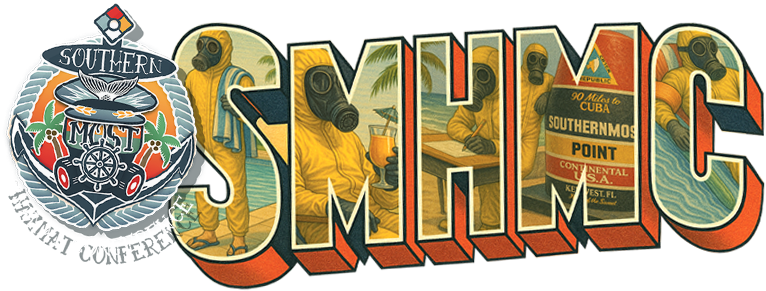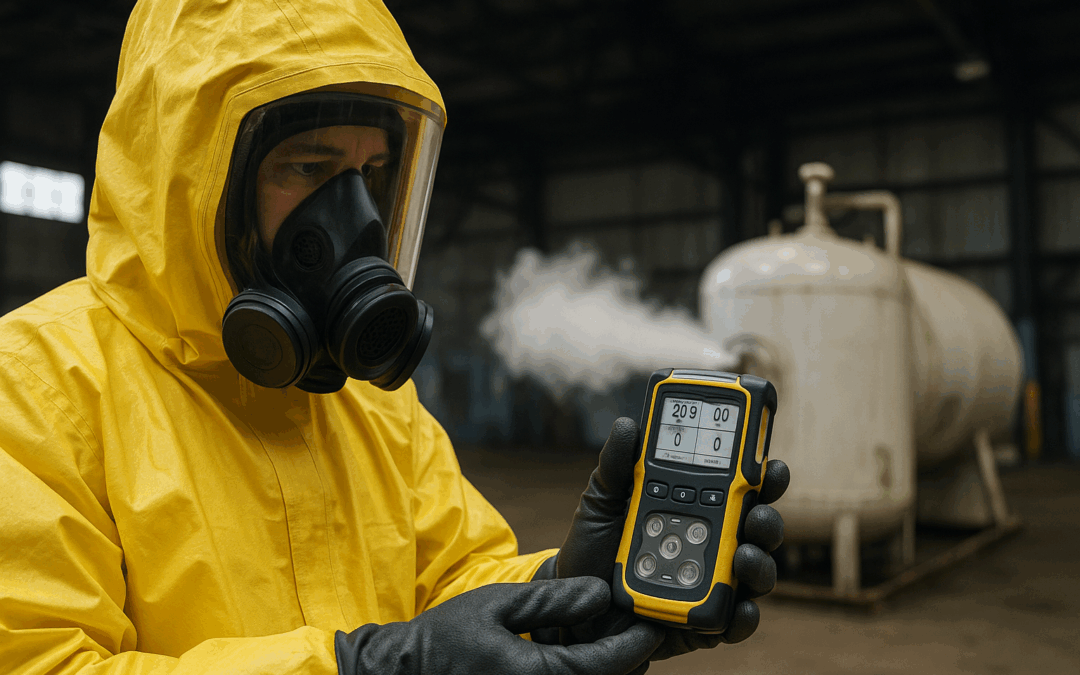When the Meters Matter: Real Talk on Hazmat Training, AEGLs, and Getting It Right
Back From the Field: Real-World Lessons in Metering
When Mike and I sat down for this episode, we were both fresh off teaching gigs; he in Massachusetts, me in wine country out in Santa Rosa, California. Teaching’s always good for sparking deeper questions. In Mike’s case, it was about metering. Not just how to use meters, but how they actually fit into an operation.
He’d been running a hands-on class that went beyond the usual checkbox training. As he put it, most hazmat techs know what a PID is, but they don’t always understand when to use it, or how it connects to the bigger picture.
Take ammonia. A PID can’t confirm it’s ammonia, but once another tool gives you that confirmation, the PID can help track it, up to 10,000 ppm. That’s one breath from dead, by the way. If you’re waiting for your LEL to pick up at that point, you’re already late to the party.
That’s why Mike’s big on the idea of a “continuum.” Each meter has a job, a place in the timeline. If you know where each fits, you get better, faster decisions. That’s what his class walked away with, and it’s something we’re trying to make second nature in our own training.
The Training Dilemma: Are We Teaching Backward?
Out in California, I ran into a classic problem: the structure of the curriculum versus the reality of the job.
I was teaching “B-Week”-Applied Chemistry- and we were just starting to tie together chemical properties with real-world applications. We were doing forecasting exercises, “what’s in the bucket” drills, basic metering scenarios. But the students hadn’t covered PPE yet.
And that’s where the friction hit.
We’re asking students: “What would you wear here?” But we haven’t taught them the gear yet. Still, I don’t want them skipping that part of the decision-making process entirely.
So I posed the question to Mike: Can you ask students to make PPE decisions based only on metering data, even if they don’t know the difference between Level A and B suits yet?
His take? “Absolutely.” Because it’s not about knowing all the labels, it’s about identifying the harm. Is it respiratory? Is it skin absorption? From there, you can start laying the groundwork. Those dots can be connected later.
Toxicology, Metering, and PPE: It’s All One Story
We both agreed: the problem isn’t the students, it’s the way training programs chop up the content.
Toxicology affects PPE selection. Chemical properties affect metering. But when you silo them into different weeks or modules without overlap, you miss the chance to build those natural connections. It’s like trying to build a Lego tower without clicking the pieces together.
Mike said it best: “Set the table, eat the meal. Set the table, eat the meal. Keep coming back.”
The point is, training should be layered. Not isolated. If you teach metering without even mentioning PPE implications, you’re leaving people with half the story.
AEGLs: Making Sense of Exposure Guidelines
We also took a deep look at AEGLs, Acute Exposure Guideline Levels. If you’re in the hazmat world and don’t use these, it’s worth a refresh.
AEGLs are designed to help us make fast, real-world decisions in public settings. These aren’t worker-based limits like OSHA’s TWA numbers. AEGLs answer questions like:
- When do we evacuate a building?
- When do we shelter in place?
- How bad is “too bad”?
Here’s how they break down:
AEGL-1:
You’ll feel it, maybe itchy eyes or a scratchy throat, but it’s temporary. Shelter-in-place territory.
AEGL-2:
Now we’re into serious stuff; long-term health effects, impaired ability to escape. At this level, evacuating starts making sense, but only if you can do it before it gets worse.
AEGL-3:
The danger zone. Life-threatening effects. Death. This is where you must evacuate before people enter this range. If you wait too long, you’re carrying bodies out.
The difference between AEGLs and other exposure limits isn’t just about severity, it’s also about time. Same chemical, same concentration, different exposure duration? You’ll get different AEGL outcomes.
That’s why AEGLs tie so well into plume modeling. You’re not just measuring how much is out there, but for how long people will be exposed. That’s your real risk.
Real-Life Application: Timing, Distance, and Decisions
Say you’ve got to evacuate a nursing home near a chemical release. You check the plume model, it shows an AEGL-2 zone encroaching in 30 minutes.
Can you clear the building in time?
If the answer’s no, maybe it’s safer to shelter in place. But if you’re only looking at TWA numbers, you won’t catch that nuance.
It all comes back to dose and time. AEGLs help us weigh both. But more importantly, they help responders make decisions that match reality, not just theory.
Why This Matters: It’s About Smarter Hazmat Response
Training needs to evolve. We both feel it. Responders deserve more than piecemeal instruction that separates metering from PPE, and exposure from action.
The real world doesn’t work that way.
Teaching shouldn’t either.
We’re pushing for a better structure, one that reflects the actual flow of a call. One where toxicology and metering aren’t taught in isolation. Where AEGLs aren’t a footnote, but a key part of risk-based decision making.
And where every student, whether in B-Week, at a conference, or in the middle of a drill, can start to see how all the pieces fit together.
Final Thoughts
As Mike said during the episode, sometimes you have to go a little rogue to give your students what they need, even if it means stepping outside the formal structure.
We’re not trying to be rebels. We’re just trying to make sure the next generation of hazmat techs aren’t left with a jigsaw puzzle and no picture on the box.
Let’s teach like it matters, because it does.


